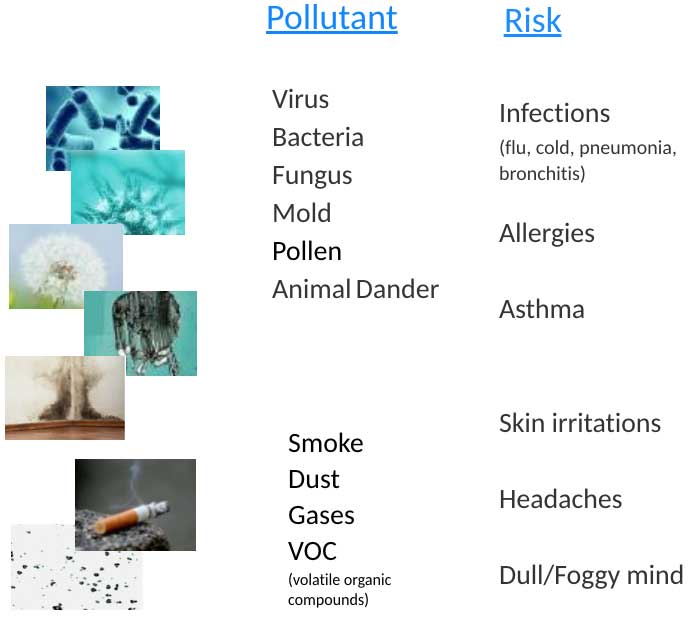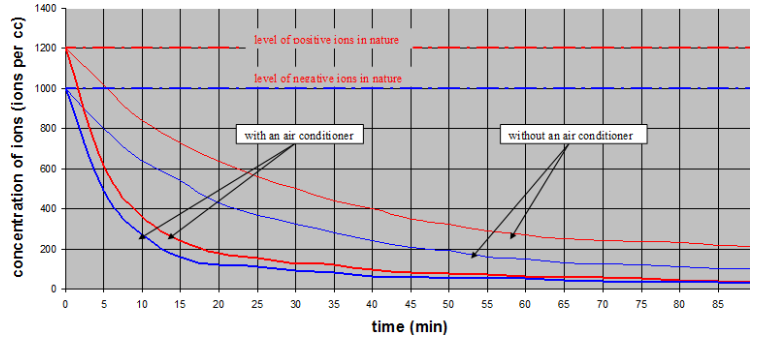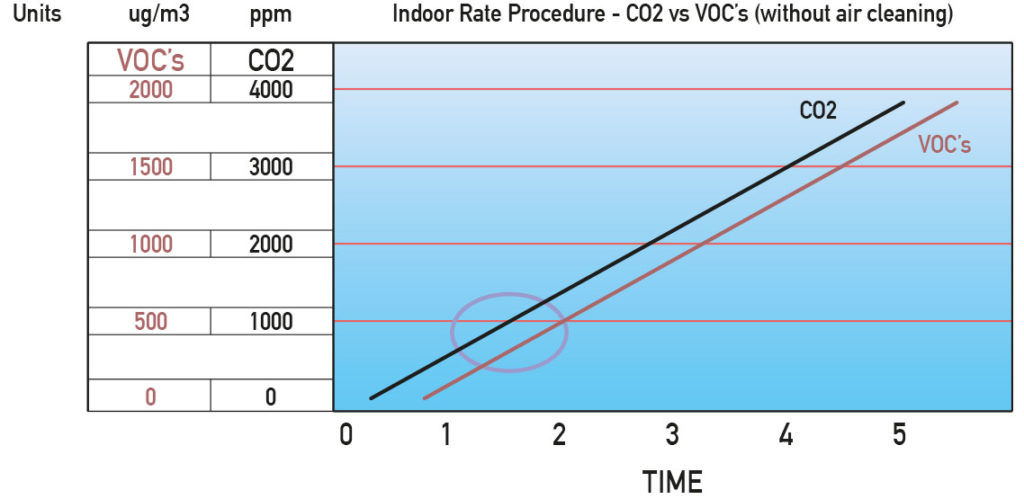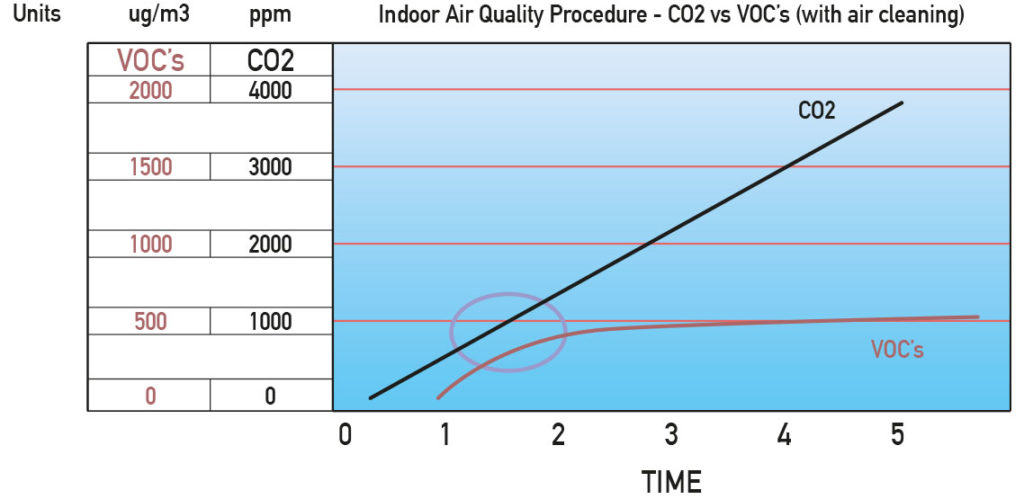Indoor Air Quality
Indoor Air Quality (IAQ) affects each of us, wherever we live!
Graph of ion concentration vs. Time in a closed room:
At Time 0 the concentration of positive and negative ions is considered equal to the surrounding outdoor environment (open windows). At closed windows: The graph shows the concentration of ions per cubic centimetre with and without conditioning system. In both cases the concentration of ions drops to minimal levels. It is evident how, with the air-conditioning in service, the concentration decreases more quickly because of the higher number of air exchanged with a percentage of recirculation.
We spend 90% of out time indoors!
The US Environmental Protection Agency ranks the quality of indoor air at position 4° on the list of the most dangerous threats to man's health.
65% of colds are contracted at home.
The syndrome of the sick building:
The dwellers of these buildings present a wide range of symptoms related to biological and chemical pollutants in the indoor air.
The most widespread pollutants and the risks they entail

Ventilation Rate Procedure (VRP): Standard for calculating the external air exchange required for commercial buildings
As the level of CO2 increases, so does the value of VOC (Volatile Organic Compound) which is the most dangerous element for the health present in the indoor air. If, to meet the VRP rules, the CO2 value measured is used to regulate the flow of fresh air in an environment, it will be necessary to keep this value below the 700 ppm . Therefore, more air changes are needed as the CO2 value measured above the 700 ppm threshold increases (according to ASHRAE 62 VRP, the CO2 levels must be kept below 700 ppm)
When an air cleaning system is used to keep under control the VOC indoor values, the value of the CO2 can rise up to 5000 ppm (ASHRAE 62 IAQP Allows up to 5,000 PPM in accordance with OSHA).
This means less air changes and also a more use of recirculation without thereby compromising the healthiness of the environment.
AWIONS controls the levels of VOC in the various tracts of the air conditioning system, including the air in the indoor premises. The need of recircultaion of the air is significantly reduced. This means lower energy consumption, while maintaining optimal levels of indoor-air quality.
SanPiN (Sanitary and Epidemiologiсal Norms) 2.2.4.1294-03
| Normal quantity | Concentration n+ (ion/cm³) | Concentration n- (ion/cm³) | Fattore di unipolarità Y |
|---|---|---|---|
| Minimum acceptable | n+ >= 400 | n- >= 400 | 0,4 =< Y =< 1,0 |
| Maximum acceptable | n+ < 50000 | n- < 50000 |
| Purpose | Test name (abbreviated) | Ion concentration setting at which irritation may occur |
|---|---|---|
| Skin irritancy (normal level) | Acute skin irritancy and corrosivity testing | Approx. 1 million/cm3 |
| Eye irritancy (normal-level) | Acute eye irritancy and corrosivity testing | Approx. 13 million/cm3 |
| Genotoxicity (normal level) | Inhalation toxicity testing (assessment of genetic impact on lung tissue) | Approx. 7 million/cm3 |
Testing facilities: Mitsubishi Chemical Medience Corporation


